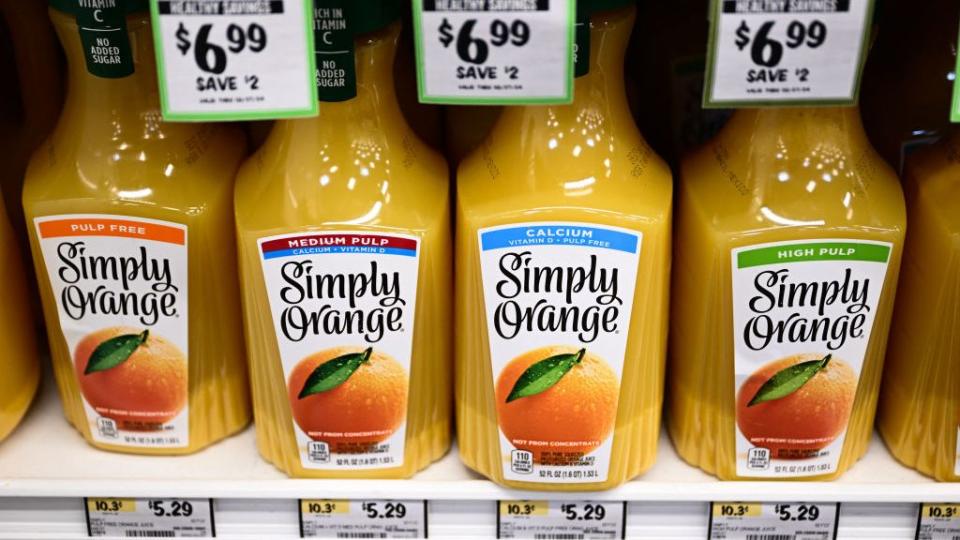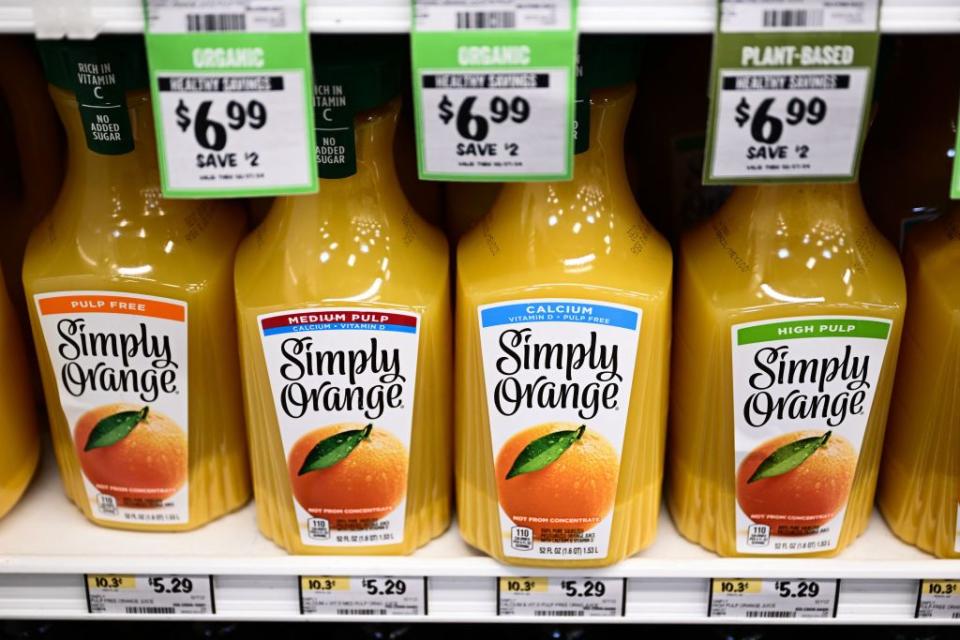Orange Juice Is The Most Expensive It's Ever Been—Here's Why

Things are not looking good for orange juice prices: the price of OJ reached an all-time in May 2024 after climbing rapidly over recent years.
Orange juice concentrate prices hit a high of $4.95 per pound in the futures market, up from below $1 per pound in January 2020, The Guardian reported.
Just like many food-cost increases, you can blame this one on shortages. Brazil, the leading producer of oranges in the world, is experiencing a massive orange shortage. According to the 2024-2025 study by Fundecitrus, a Brazilian research association formed by citrus growers and manufacturers, the forecast for the upcoming orange crop season is projected to decline to record lows. But that’s not all: the U.S. Department of Agriculture’s (USDA) May forecast also reported that production in Florida—the nation’s main orange producer—is down 5%.
Fundecitrus reports that the main orange-producing areas of San Paulo and Mines Gerais are predicted to harvest 232.4 million boxes of oranges this year, which is down nearly 25% from the previous cycle and will be the second smallest crop harvest since 1988-1989.

While diseases like citrus greening and pests have caused a significant drop in this year’s potential yield, the biggest threat to the fruit harvest has been climate change. “This season, the combination of high temperatures, high evapotranspiration rates, and an intense water shortage in the citrus belt during the crucial period of flowering and fruit setting resulted in a low number of fruits per tree,” the report states.
Oranges aren’t the only product showing a decline in supply. Other commodities like sugar, coffee, and cocoa have seen a production shortage due to severe weather conditions in their main growing countries. Uriyoán Colón-Ramos, an associate professor of nutrition and global health at George Washington University, offered some insight into how food prices are a tangible way to talk about climate change.
“People keep wondering why the prices haven’t gone down and there are a million explanations out there,” she told Axios. “But buried in there are the changing weather patterns and floods that affect crop production.”
As a result, prices for orange juice have increased 26.82% since the beginning of 2024, and prices for orange juice concentrate are up to $4.95 per pound, more than double the cost from this time last year, according to Food & Wine. As orange scarcity has pushed prices of orange juice up to record highs, juice makers have been considering fruit alternatives to supplement the demand and help cut down cost.

Kees Cools, the President of the International Fruit and Vegetable Juice Association, said in a statement to ABC News that using a “different species of fruit” such as mandarins may be “the only option without touching the naturalness and image of the product.”
However, replacing oranges with mandarins and other fruits may prove to be an issue. Francois Sonneville, senior analyst for beverages at Rabobank, explained to Food Ingredients First that “many fruits are destined for the fresh market, and it is not easy to divert this flow to the juice industry.” That, coupled with the logistical difficulties surrounding fruit regulations, may add a significant amount of time to the juice production process.
You Might Also Like

 Yahoo Finance
Yahoo Finance 